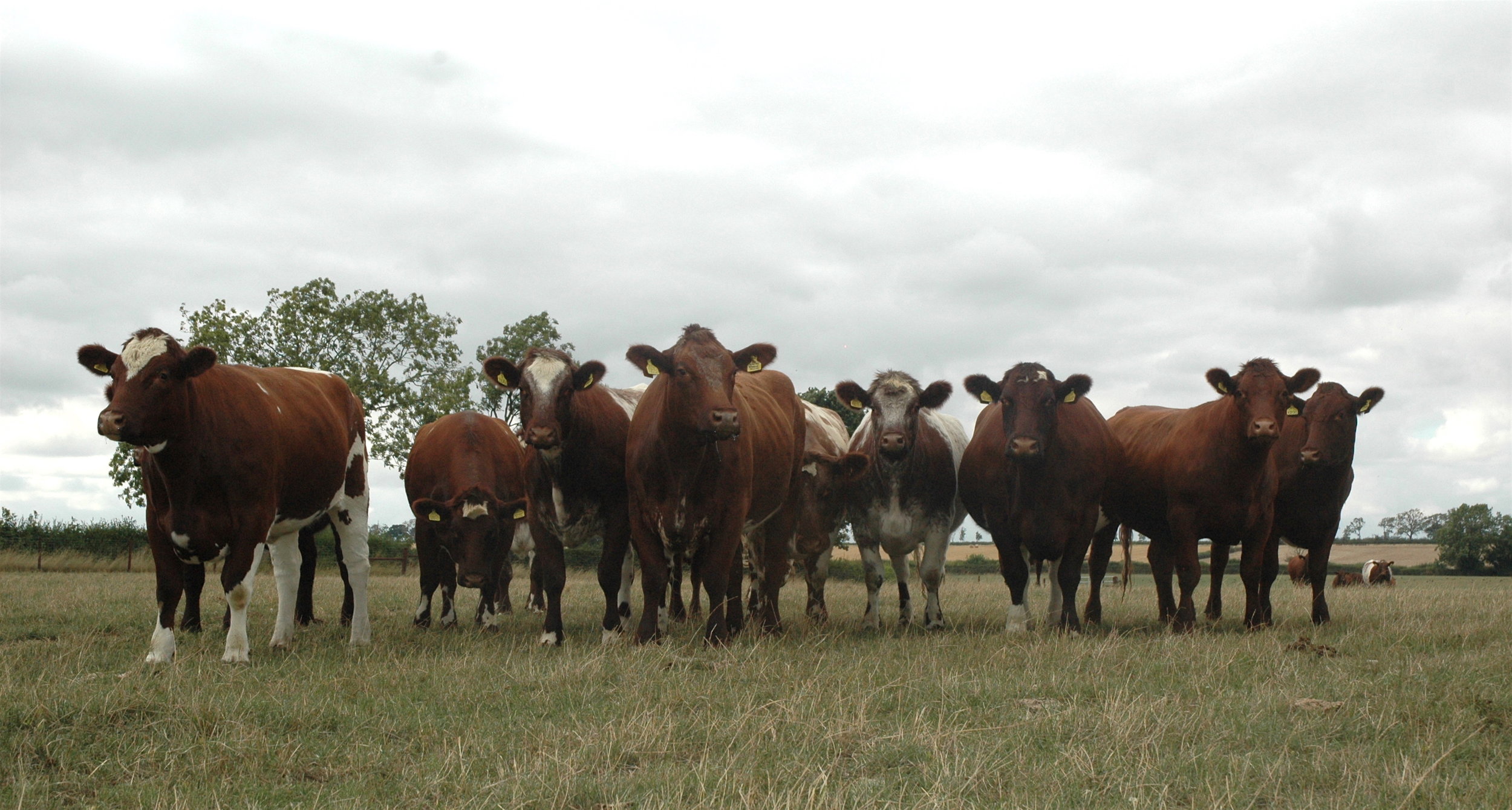Establishing a Beef Shorthorn herd
Langhams fact file
75 Beef Shorthorn breeding females
75 South Devon breeding females
200 ewes including a pedigree Ryeland flock
710 acres grassland arable split
Langhams Jo-Anne Rodger and Andre Vrona
Cattle breeding is a long-term business for Andre Vrona and his daughter, Jo-Anne Rodger who concede it may take a lifetime to achieve their end goal - to consistently breed a type of Beef Shorthorn that they believe will meet market demand. “We believe the future of Beef Shorthorn ultimately lies in being a successful functional suckler cow and commercial beef animal. Continental cattle had got a hold in the UK; native breeds are now swinging back,” says Jo-Anne.
“We want to breed replacement females for other pedigree breeders, and whilst we both fully understand there is no fast track, you cannot expect too much too soon, you need a bit of luck, a bit of instinct. We would like to be breeding more consistent type of cattle for sale by 2023; that’s almost a decade on from buying our foundation cow, and we believe we are on target.
“Our Langhams herd is continually improving. Its genetic history is based on female lines - consistency of gestation length, udders and feet together with maternal traits - milk and ease of calving together with beef indices - fleshing. That’s what we keep to the fore of our minds and then comes Breedplan data, we match the EBVs to the aesthetics,” she explains.
“There’s no fast track; first get to understand the breed and the whole process of breeding...”
“Breeding for consistency in type and conformation is amongst our top priorities; it’s something Australian Beef Shorthorn breeders are good at and we too are attempting to remove the variables,” explains Andre who admits to burning the midnight oil scanning through maternal trait Breedplan data for dam and granddam lines. “It’s all about provenance; I will not buy a bull unless he is out of a female line that has consistently bred. For example, one of our new herd sires is within the breed’s top 1%, he’s a fast track from a great female line and optimises the breed. Nothing comes from nothing; it all comes from provenance.”
He continues: “I have followed bulls in Australia going back seven to eight generations - once you know how to use Breedplan, it’s a massive selection tool. In turn, we now have Australian sired embryos we can trace back up to eight generations. To speed up the herd’s genetic progress, we have an ET programme, and we are also considering introducing In-Vitro embryo Production (IVP).”
Andre who hails from a farming family, returned to the land eight years ago having spent a 30-year career in civil construction; he currently manages an 80-strong team working in construction with a portfolio including cathedrals, stately homes and universities. Back home and the Langhams herd is very much a family affair managed on a day to day basis by Andre and Jo-Anne, with valued help from stockman, Craig Fell.
One of Langhams latest stock bulls, the high index Jehu of Upsall
“I’ve always enjoyed stock in particular, cattle and thought we would invest in a couple of cows,” Andre explains. “Beef Shorthorn appeared on our radar and influenced our thinking back in 2014 when we spotted a cow in her stall at Newark Mart. At the time, we had already invested in South Devons, however we saw the potential in Beef Shorthorn which has proved to be the case.
“In fact, since the very first time I looked at Beef Shorthorn nine years ago, I’m aware there has been some terrific enthusiasm from certain breeders and the society had been phenomenally successful in taking the breed from virtually nothing to being recognised not only as a functional suckler cow, but also as a serious beef animal. And as I have become more interested in the breed, I’ve found that some great genetic gains have been made.”
After securing Langhams foundation cow Kellythorpe Tessa, the rest is history. “We rapidly built up to a small herd of 30 breeding females from a handful of progressive breeders. They were good breeding cows with accompanying good EBVs to back up what we saw, and we’ve been really pleased with them. At the same time, we reduced the South Devon herd.
“We’ve finally arrived with a 50:50 balance, however nowadays the South Devons have taken on a new role, they are offering an endless supply of perfect recipients for our Beef Shorthorn embryos. They come with great pelvic width and perfect temperament combined high health status which is something we take very seriously - the herds are members of a CHeCS approved scheme,” he says.
Homebred in-calf heifers
“Langhams current ET programme includes embryos comprising a fusion of Australian sires and Canadian damlines. The high genetic merit sires were selected because their offspring have been physically challenged, they have done well in a competitive marketplace and we believe such genetic merit can contribute to our goals. The selected dam lines all have provenance in linear performance.”
Jo-Anne adds: “It’s nice when you are able to join something where you can hope to make a positive contribution however, you need that ambition, knowledge and a certain amount of luck to find out in which direction to go.”
Andre Vrona and Jo-Anne Rodger’s top tips for prospect Beef Shorthorn breeders
Strive to understand Beef Shorthorn and focus on trait linked to type breed improvement
Take your time selecting foundation stock
Check out the provenance of the female lines - visit as many herds as you can
Check the animals’ health status - it has to be right up there
Attend official Society sales and look out for quality animals
Talk to breeders who are in the frame, take their advice; we’ve found them to be genuinely very helpful



